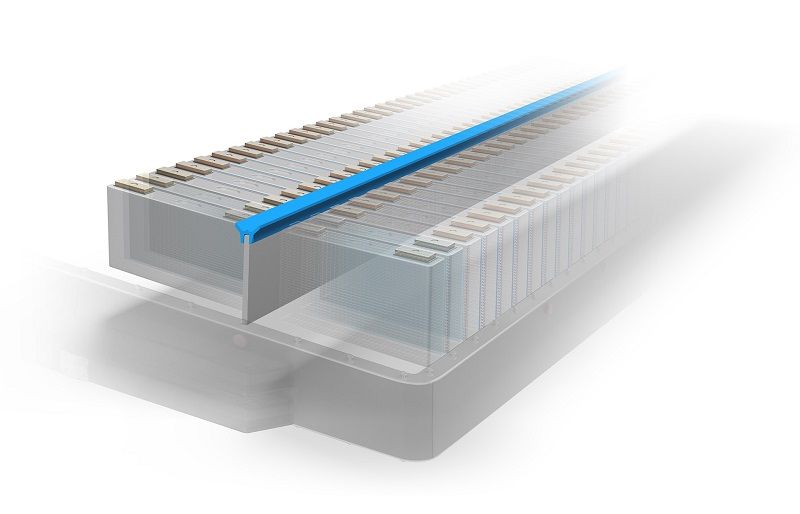Freudenberg Sealing Technologies Launches Safety Components for Batteries
In lithium-ion batteries, higher energy density increases the risk of thermal runaway. As a preventive measure, Freudenberg Sealing Technologies has developed thermal barriers that help to slow down thermal runaway by increasing resistance to propagation. The new 3D thermal barriers can be used at various positions within the battery and have already proven reliable in their initial series productions.
Well over 100 million electric cars are expected to be on roads worldwide by 2030. To make electromobility more efficient in the future, many manufacturers are working on achieving higher ranges and shorter charging times. That is why high-performance batteries are one of the priorities in this development. But in lithium-ion batteries, higher energy density increases the risk of thermal runaway. For that technical environment, Freudenberg Sealing Technologies has developed thermal barriers. These slow down or even stop thermal runaway by increasing thermal propagation resistance.
“What is completely new is that the thermal barriers are now also available in customized, flexible 3D geometries, which makes it possible to use them in various positions within the battery and allows for integration of additional components,” says Andrew Espinoza, global vice president technology of the oil seals powertrain and driveline division at Freudenberg Sealing Technologies.
Thermal runaway, which is the ignition or explosion of a battery cell caused by a self-reinforcing heating process, is a significant safety problem. It can be caused by a range of internal and external factors, such as overcharging, excessive discharging, damage, or heating of the battery. Thermal runaway releases not only flames and hot gases but also electrically conductive particles. These in turn can cause thermal propagation in adjacent cells and lead to short circuits in the electrical system. Thermal barriers act as protective layers that slow down or even prevent the heat and flames from spreading in the battery, which significantly increases safety.
Entirely new possibilities
Beyond the existing two-dimensional barriers, such as flat mats and thermal blankets, the 3D variant opens entirely new possibilities. Customer-specific, three-dimensional geometries can be produced in a variety of high and low volume manufacturing processes, such as injection molding and continuous extrusion. Profile seals, module separators and covers, including those for bus bars, cooling lines or electrical components are a few of the products currently being produced. Another advantage: The manufactured, complex 3D geometries are lightweight and have minimal impact on the battery’s overall weight.





 Power Transmission Engineering is THE magazine of mechanical components. PTE is written for engineers and maintenance pros who specify, purchase and use gears, gear drives, bearings, motors, couplings, clutches, lubrication, seals and all other types of mechanical power transmission and motion control components.
Power Transmission Engineering is THE magazine of mechanical components. PTE is written for engineers and maintenance pros who specify, purchase and use gears, gear drives, bearings, motors, couplings, clutches, lubrication, seals and all other types of mechanical power transmission and motion control components.